Are you constantly losing the cold air from your car AC each time you start driving, and you want to know the reason behind this problem? You’ve come to the right place, for we have researched this question, and we have the answer for you.
The pulley of the AC compressor in your car has a clutch system that engages and disengages the compressor. If the space between the clutch and the compressor’s pulley is more than normal, the clutch will fail to engage the compressor’s pulley to get power from the camshaft.
Here are other less common possible causes of this problem:
- Failing temperature sensor or temperature switch
- Low coolant level
- Faulty compressor
- Wiring issue
This might sound complex, but we will make it all simple in the succeeding sections to help you understand the reason behind the problem. We will talk about how the car AC works and how the compressor clutch fits into that system.
Read on!
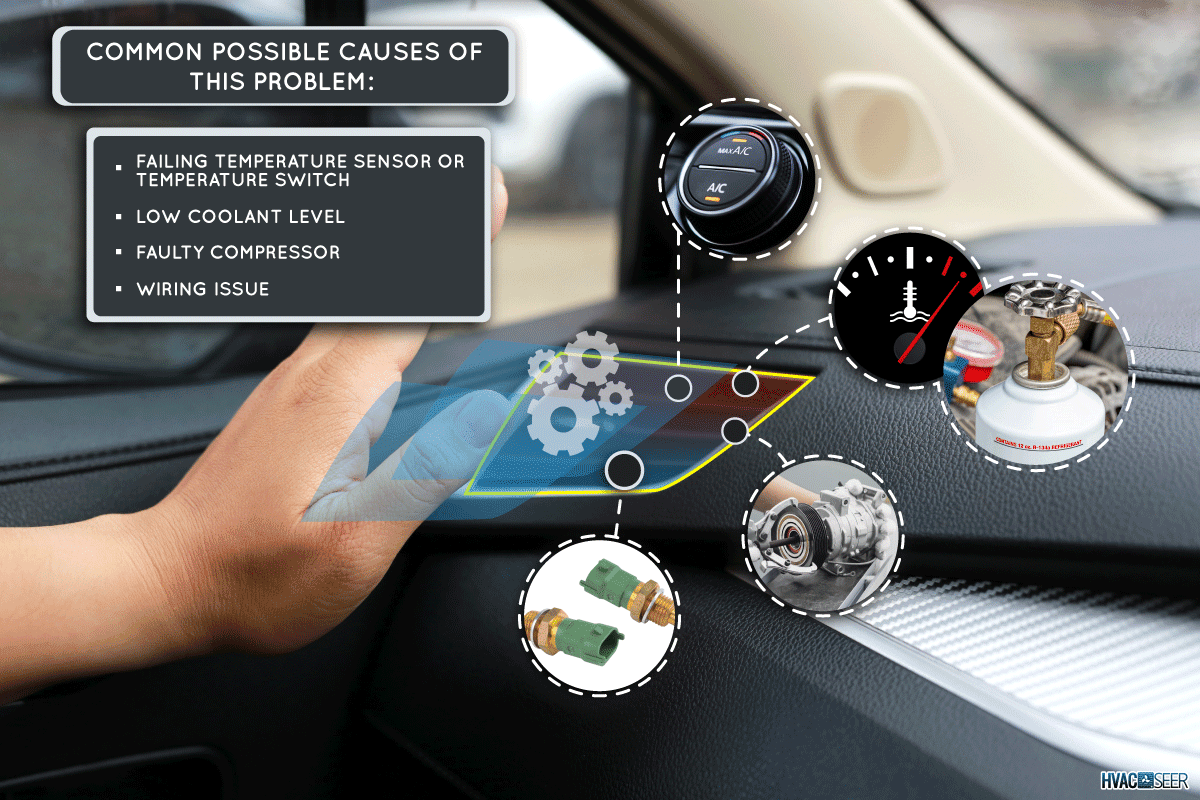
AC Compressor: The 'Heart' of the Matter [How it Works]
The air conditioning inside your car may not matter much in the winter, but it is what makes long summer drives more comfortable. And at the heart of your car’s AC is the compressor.
The AC system in your car cools the air by switching refrigerant back and forth between its gas state and liquid state. The changes in the refrigerant’s states allow it to absorb heat and humidity from your car and give off cool, dry air.
The AC system manipulates the pressure and temperature of the refrigerant to switch it between the gas and liquid states. The compressor is responsible for changing the pressure of the coolant while in gas form.
The Coolant Cycle In Your Car AC
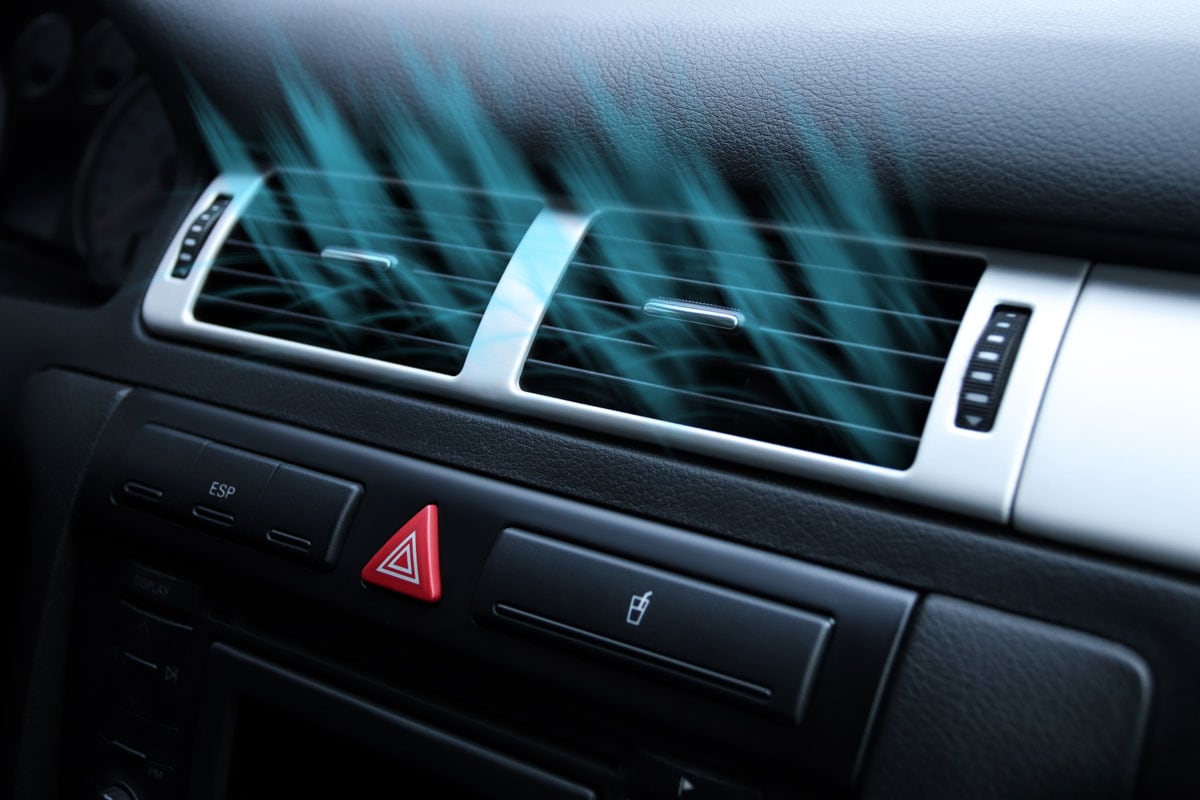
The gaseous coolant, while at low pressure, enters the compressor. The compressor’s pistons work on the gaseous coolant and turn it into a high-pressure gaseous coolant.
The coolant then moves to the condenser. The condenser cools the coolant and liquefies it while retaining its high pressure.
The coolant passes through the dryer before it completely exits the condenser. The purpose of the dryer is to take away any moisture from the liquid coolant before it leaves the condenser.
The coolant then travels to the evaporator, where it absorbs heat from the warm air inside your car. The warm air passing through the evaporator cools and then returns to the passenger cabin. The heat moves to the liquid coolant and turns it into gas once more.
Evaporation has a cooling effect because molecules move further from each other when it transforms from a liquid into gas. Molecules must lose or receive energy when changing state. Liquids lose energy because they use heat energy to overcome the molecular bonds that keep the molecules in liquid form.
The coolant leaves the evaporator as a low-pressure gas and travels back to the compressor. This starts the cycle once more.
How the AC Compressor Clutch Works
The camshaft powers the compressor. A serpentine belt connects the compressor and the camshaft pulley. The rotation of the camshaft rotates the pulley of the compressor. The rotation, in turn, provides power to the compressor's pistons to compress the coolant.
The AC compressor clutch is responsible for engaging and disengaging the compressor pulley.
The compressor pulley turns all the time while the engine is running. However, unless the AC compressor clutch engages the compressor pulley, the rotational energy on the pulley will not transfer that energy into the pistons of the compressor. The pulley will just rotate without doing anything.
ECU Controls Clutch Relay
The AC compressor clutch is connected to the ECU (engine control unit). The ECU has direct control over the activities of the compressor clutch, and it can activate or deactivate it.
The compressor clutch has an electromagnet that the ECU can use to engage and disengage it. A compressor clutch relay is connected to the electromagnet. The ECU controls the clutch relay to control the electricity that goes to the electromagnet of the clutch.
A clutch coil relay diode is added to the circuit to redirect the magnetic field when the compressor clutch is disengaged. The diode prevents spikes in the voltage due to the magnetic field.
When does the compressor clutch disengage the pulley?
The AC compressor clutch will disengage the pulley when you turn off your car’s air conditioner. This is to minimize wear and tear on the compressor. Moreover, if you set your AC to blower only, the only way to stop the cold air from flowing through is to turn off the compressor.
In addition to turning off the compressor clutch when the AC is not in use, the ECU will also disengage the compressor clutch when you get to a high RPM. Disengaging the compressor will give the engine more power for accelerating. Once you get back to a lower RPM, the ECU will then reengage the compressor clutch, and your AC will work as normal.
The ECU also turns off the compressor clutch during tight turns. This is to redirect the power from the camshaft to the power steering and assist in turning.
Another reason why the ECU would turn off the compressor clutch is when the sensors detect that the compressor is getting too hot. The ECU does this to prevent damage to the compressor due to overheating.
A low refrigerant level will also disengage the compressor.
Why does my AC stop working when driving?
There is a specific distance between the compressor clutch and the pulley when the compressor is disengaged.
If the distance is too small, the clutch will generate too much friction, and it will wear out too early. Usually, the whole compressor will need replacement when the compressor clutch wears out.
If the distance is slightly greater than what it needs, the clutch will be able to engage the pulley when the engine is idle. However, when the engine’s temperature starts to rise, the distance will also slightly increase due to expansion. The distance can get to a point where the clutch will no longer be able to engage the compressor’s pulley to activate the compressor.
Without the compressor to change the pressure of the coolant, your car’s AC will not work.
Calibrate the Clutch and Pully
The AC compressor clutch should be calibrated with the pulley. A mechanic has special gauges to measure the distance between the compressor clutch and the pulley. The gauges will tell the mechanic whether the distance is within the acceptable limit or not.
Most compressor clutches and compressors are made as a single unit. This means that these compressors are not serviceable. A problem with a part like a compressor clutch usually means that the entire compressor will need a replacement.
There are other possible culprits that will disengage the clutch when you start driving your car, albeit they are less common. We talk about them below in detail.
Failing Temperature Sensor
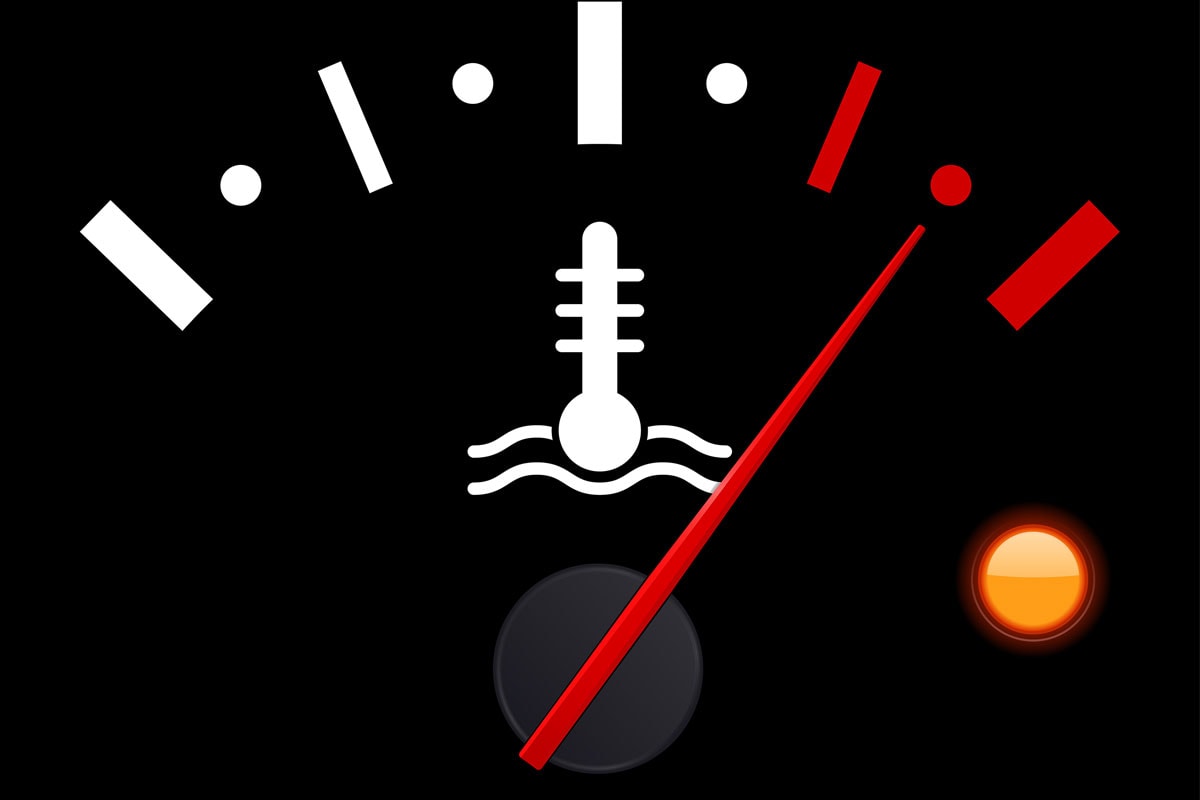
Remember that there is a temperature sensor on the compressor that reports back to the ECU. This sensor determines the temperature of the compressor. If the ECU determines that the temperature is too hot, the ECU will disengage the compressor clutch.
However, if the temperature sensor starts to fail, it could report the wrong temperature to the ECU. If the wrong temperature is too high, the ECU will disengage the compressor clutch.
A similar situation will happen if the temperature sensor is too sensitive. The slightest increase in the temperature of the engine and the compressor can cause the ECU to disengage the compressor clutch.
This problem normally requires a replacement. Bring your car to a mechanic that specializes in car air conditioners to verify the issue. The mechanic should be able to replace the faulty part.
Low Refrigerant Level
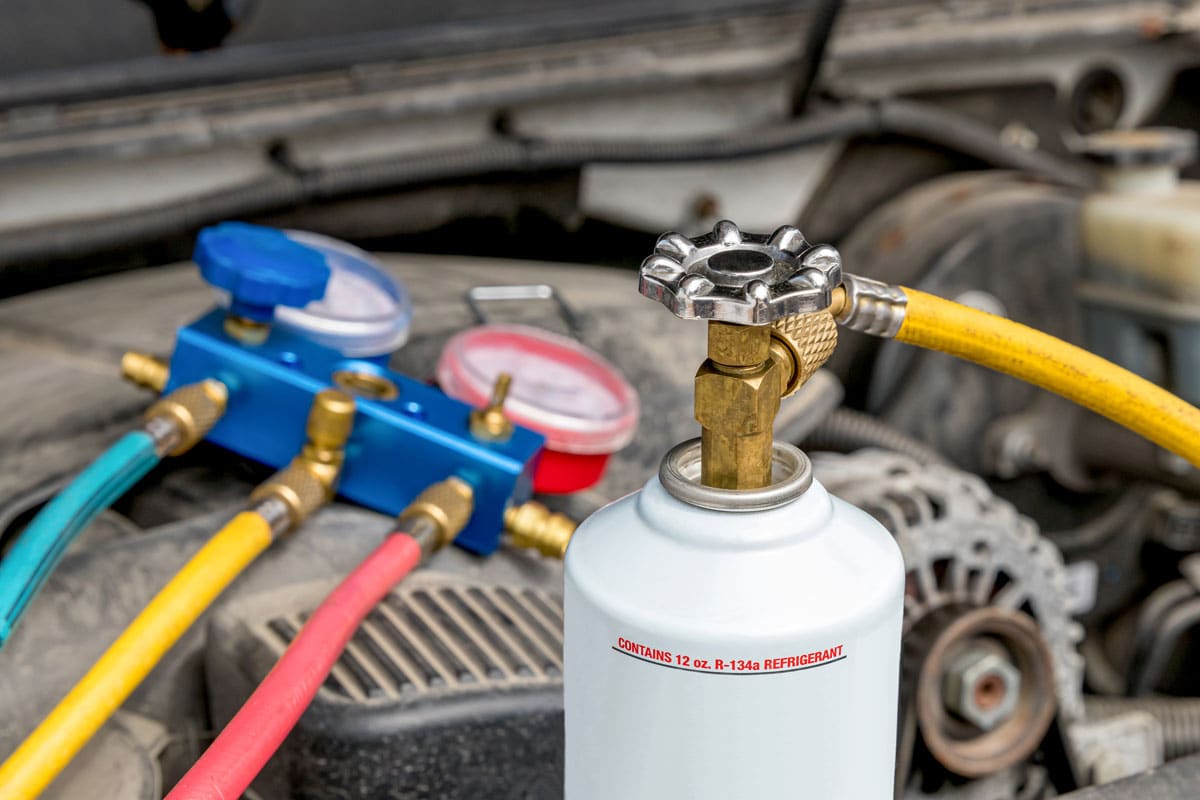
A low refrigerant level will also cause the compressor clutch to disengage.
If the refrigerant is too low, the compressor will automatically shut down. This is to prevent damage to the compressor.
If this is the case, it is best to have a mechanic check your AC system. The mechanic should first locate the leak in your system that causes your AC system to lose refrigerant and patch it. He will then drain the system, then recharge it with refrigerant.
Faulty Compressor
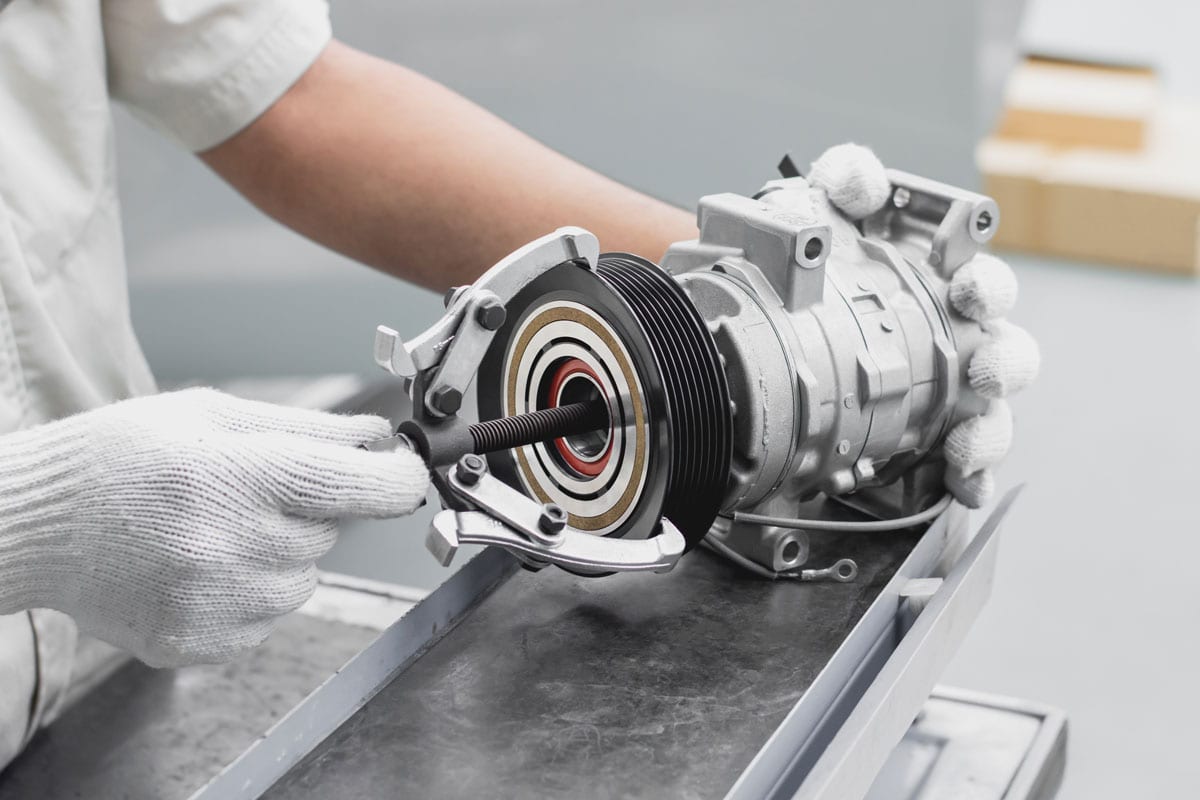
Sometimes not the compressor clutch, but the compressor itself is no longer doing its job. This can happen when the compressor is already starting to fail. It could start to work for a time but will shut itself down when it starts to heat up.
Replacing the compressor is the only solution to this problem. This is best done by a mechanic.
A mechanic will make sure to create a vacuum after replacing the compressor and then recharge the refrigerant.
RYC AC Compressor is available on Amazon through this link.
Wiring Issue

A wiring issue can make it difficult for the ECU to communicate with the compressor clutch, and this miscommunication can cause the ECU to prematurely disengage the clutch.
Have a mechanic check the wires of your AC system for faults.
Conclusion
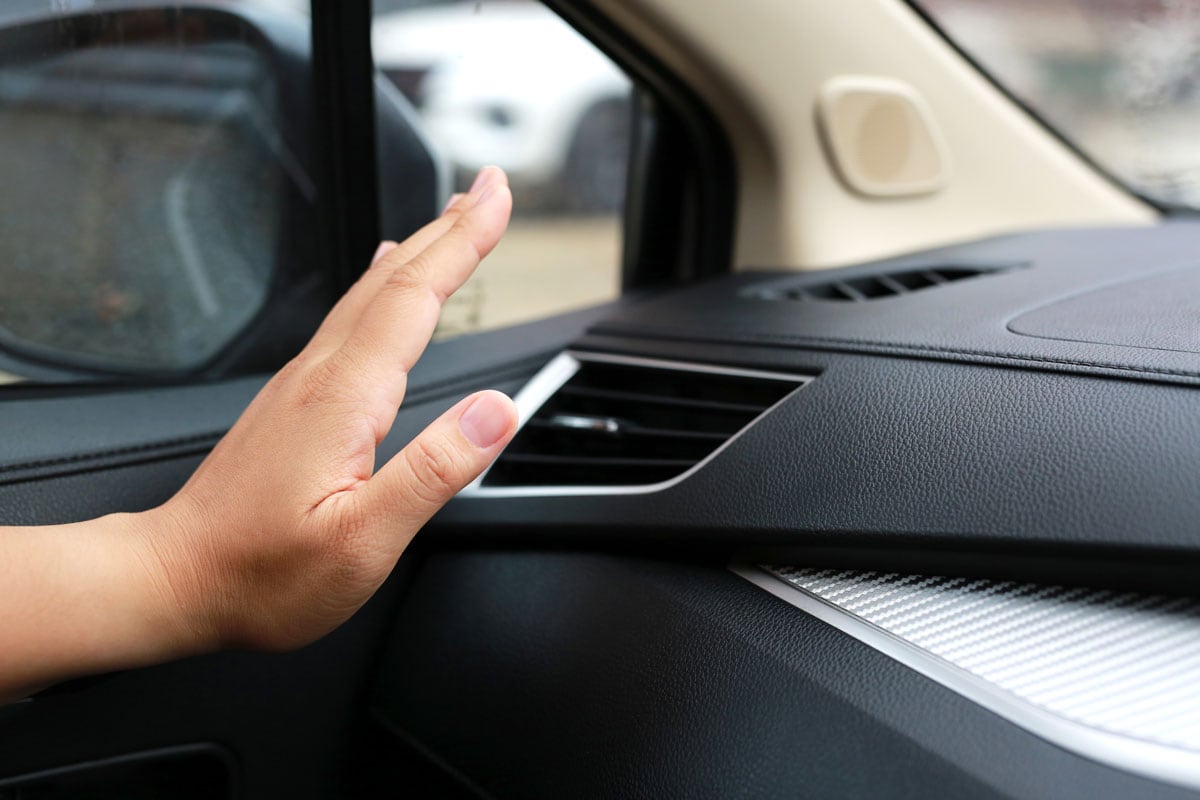
An AC compressor clutch is a part of your car that is not commonly known to car owners. A malfunction of the compressor clutch can cause the AC to stop working when you start to drive your car.
If you enjoyed reading this article, you might find the articles below equally enjoyable to read:
Scroll Vs Reciprocating: What Compressor Is Best For Your Needs?

